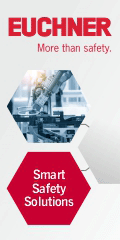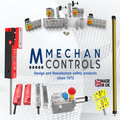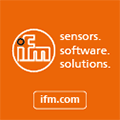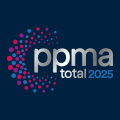
Posted to News on 8th Nov 2013, 13:37
How to select correct IP ratings for electrical enclosures
Manufacturers of enclosures are required to provide an IP rating for every product, which allows designers and installers to ensure that they select the correct product for each application. But what exactly do all the numbers mean and how can you be sure you have made the correct choice? Chris Lloyd, Managing Director for Spelsberg els UK, offers an insight into IP ratings and how it affects product selection.
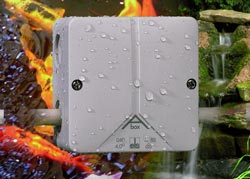
Technically, IP stands for International Protection, but is more commonly known as Ingress Protection and is a set of ratings designed to provide a reliable standard for determining the level of protection offered by an enclosure against solid objects and water. These ratings are defined by the international standard EN 60529.
Although these ratings were initially developed as a way to classify enclosures, they now provide engineers with a convenient, practical way to compare levels of sealing. This standard describes a system for classifying the degrees of protection provided by the enclosures of electrical equipment and is displayed in a standard format, IP56, for example.
The first digit in the rating is the protection against contact with dangerous parts and solid bodies. The second digit in the rating is the level of protection against the harmful ingress of water. In some cases there may be a third digit which relates to the protection of an enclosure against external mechanical damage; this classification is not covered by EN 60529 but is covered by EN 50102.
The letter "X' is used in place of the first or second numeral by equipment manufacturers to indicate that tests are not applicable to the product. It is also used in standards to indicate that for the range of products covered such protection is not required. For example, IP4X specifies that protection against the 1.0mm probe is required and that there is no requirement for the protection from the ingress of water. According to current IEE Wiring Regulations, BS7671, an enclosure, which is readily accessible, must maintain an IP rating of IP4X for horizontal top surfaces, in order to prevent small items falling through and coming into contact with live equipment.
For the purpose of most applications the rating system goes up to IP68, which provides complete protection from ingress when fully submerged (though statically fixed) in water of up to 10m in depth. However, a specialised IP69K rating is available for applications which require protection against not only the ingress of dust but also high temperature, high pressure water - making products with this certification suitable for use in conditions where equipment must be carefully sanitised.
The adoption of this classification system promotes uniformity in methods of describing the protection provided by the enclosure and in the tests to prove the various degrees of protection. The product's IP rating ensures that the person specifying a project knows that the product is protected from particles or dust or water that may be present in the environment where the product is to be installed.
Over-specified enclosures
Despite the rating system giving an accurate and reliable indication of the level of protection an enclosure supplies, it is very common to see enclosures being over specified: "just in case'. Not only is specifying a higher degree of protection often more expensive, it can also be less suitable for a particular application. For instance, ventilation or pressure compensation devices can reduce the possibility of internal condensation caused by changes in air temperature and humidity.
Ventilation can provide an important contribution to the satisfactory operation of enclosed equipment. Where significant heat is generated in an enclosure, ventilation is generally employed to permit the equipment to operate within its designed performance characteristics. To minimise enclosure size and cost it is common practice to employ natural ventilation, using louvres and/or vents as required. Suitably located louvres and/or vents can provide protection against the ingress of heavy dust and occasional drips of condensate falling from above.
Drainage holes may be sufficient to disperse the condensate, but these apertures may reduce the IP rating; however, if correctly designed, drainage holes can enhance the weatherproof capabilities of an enclosure.
It is important that enclosures are properly designed for the application and most enclosure suppliers should be able to help with this. Spelsberg, for example, has in-house design and manufacturing expertise and can ensure that every aspect of the design is considered before suggesting one of the 4000 items in the standard range or providing a bespoke, engineered product. This ensures that issues such as ventilation and drainage are catered for and non-standard cable entries are accommodated while still maintaining the required IP rating for the installation.
It should be noted that IP ratings are for ingress only and that tests are comparative and are conducted with fresh water. Therefore, they in no way indicate the enclosure's ability to withstand the effects of corrosion from salt water, chemicals, acid rain and other special environments as well as the normal expected weather conditions.
Enclosures of moulded materials are available for use in harsh environments and generally provide good resistance to corrosion and chemicals. However, to avoid deterioration, careful consideration is required when choosing moulded enclosures as some materials do not perform well with dilute acids or certain chemicals, or when exposed to ultra violet light (direct sunlight). The vast range of moulding materials now available makes it essential for specifiers to consult the manufacturer for information on the ability of moulded materials to withstand hostile environments.
Bespoke enclosures
When specifying electrical enclosures or junction boxes then all of the abovementioned points are very important considerations to ensure the correct enclosure is selected for the required application; at best, a poor specification choice will lead to unnecessary cost, but at worst it could lead to catastrophic failure once installed. It's always best to speak to an expert who can help to specify either a standard enclosure or a bespoke version designed to your individual design requirements.
To learn more about enclosures from Spelsberg els, please visit the website at www.spelsberg.co.uk.
Want the latest machine building news straight to your inbox? Become a MachineBuilding member for free today >>
Unit 1B Queensway Business Park
Hadley Park West
TF1 6AL
UNITED KINGDOM
+44 (0)1952 605849



